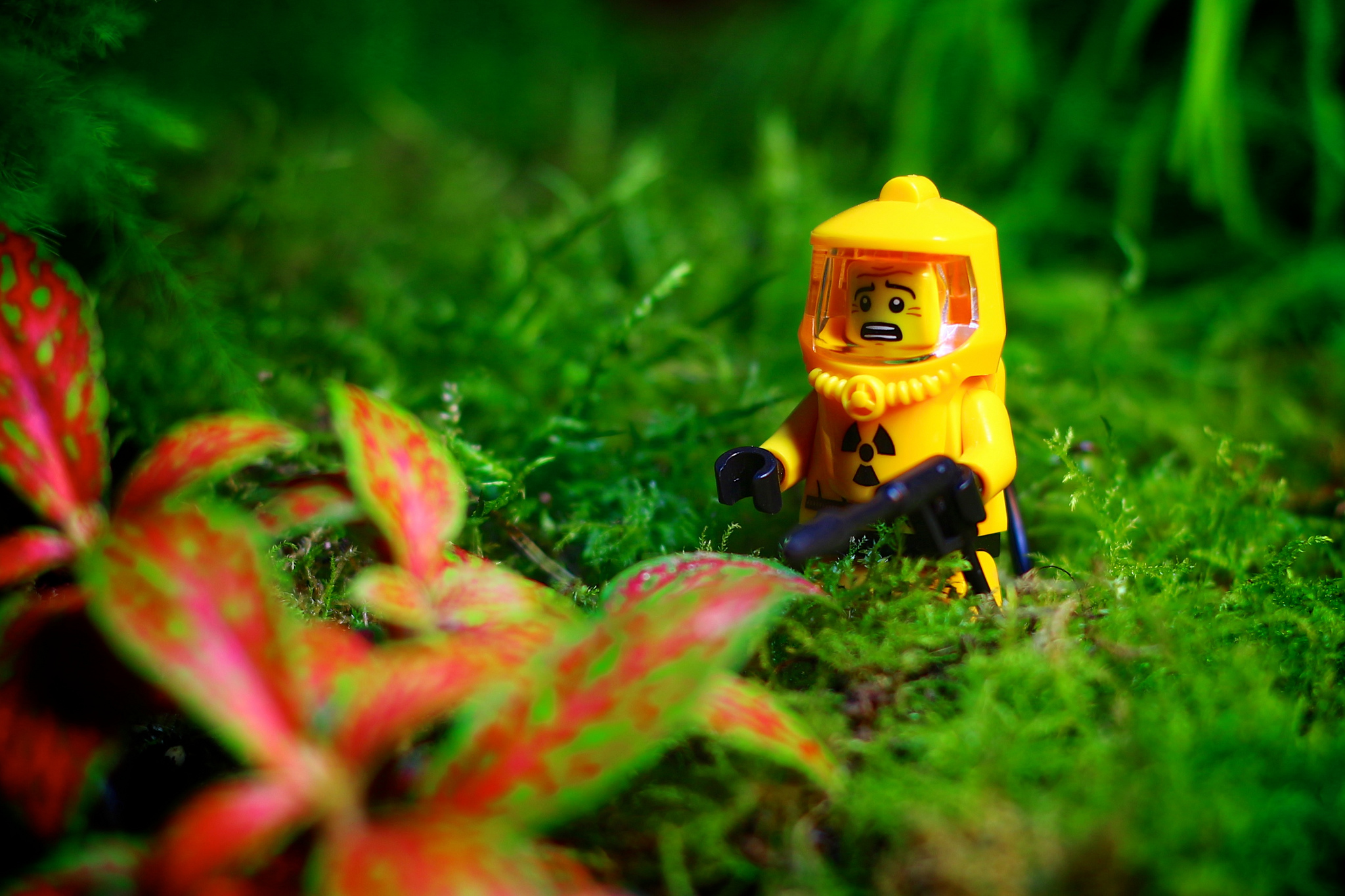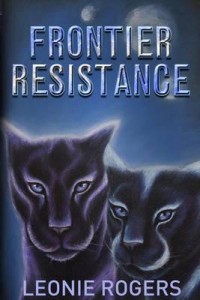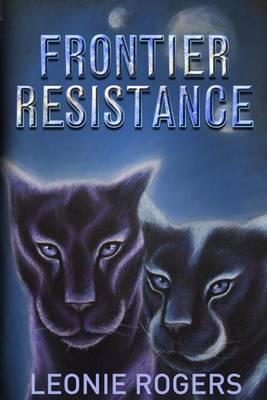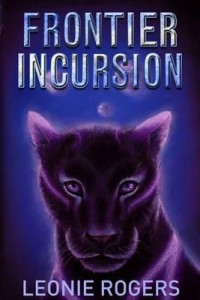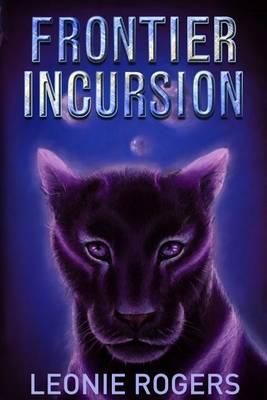This is a reposting of an interview I conducted as part of the launch of Leonie Roger’s second book, Frontier Resistance, and has been edited to reflect the growing list of Leonie’s published works.
Starcats are the kind of animals that we all would have nagged our parents to get for Christmas. Fortunately for our parents, starcats only exist in the works of Leonie Rogers, author of the Frontier trilogy.
Set on the alien world of Frontier, where everything is deadly, the Frontier trilogy (starting with Frontier Incursion and continuing in Frontier Resistance) tells the story of Shanna and her starcats as they defend their home from the invading Garsal.
Q) How did you come up with starcats?
I’ve always loved cats. I’m a cat person. When I began to write about Frontier, I always knew that the settlers needed to have some kind of special companion animal, so of course my mind gravitated immediately to cats. The normal house cat isn’t big enough to be much help on a planet as dangerous as Frontier, so I began to imagine a larger cat, and all of a sudden the cat was 100kg, and had glow-in-the-dark markings that flickered and glowed. They’re able to vanish at will, move at extraordinary speeds, and are completely loyal to their chosen humans. They also like to sleep on the bed, just like any other cat. As a result, beds on Frontier are often built with humans and starcats in mind.
Q) As someone who shares her bed with 2 regular-sized cats, I applaud the Frontier bed-makers’ thinking.
When you started thinking about the setting for the Frontier series, what came first, the starcats or the planet’s dangerous ecology?
I think I might be a little odd. I write from the pictures inside my mind. The initial concept for Frontier came from one of those pictures. I pictured a girl scaling a cliff face, above a dangerous jungle. I immediately knew that the girl was called Shanna, and that the planet was dangerous. I always knew that the settlers would need some kind of companion animal so that they could be safer than just humans alone on an alien world. So, it’s probably dangerous ecology, followed by starcat companions.
Q) That makes two of us! I also write from pictures inside my head; I think of it as a cinematic approach to writing. How does it work for your approach to world building?
It’s nice to meet another ‘pictures in the head’ person! Sometimes people give me funny looks when I try and explain it…
It’s very much like I ‘see’ the vegetation, I ‘see’ the animals, and then I just describe what’s happening. Sometimes it means that I use way too many adjectives – I’m an excessive user of adjectives – which then have to be edited out. Having said that, I have to make sure that my world building makes sense – that the ecology actually works, and that the world is believable. In my first book I wrote a scene that involved a tornado serpent, and because of the way the serpent appeared in the story, I had to explain that they were very rare, and constantly roaming, otherwise Frontier would have been completely depopulated and also denuded of vegetation. It’s one thing to know all of that inside my head, but another to realise that the reader isn’t actually reading my mind!
I think a key element to world building is to make sure that the world you’re building hangs together. For me, practically, it means that I sometimes have to slow the pictures down a little to examine them properly, or later on, go back and edit really well so that I weed out the ‘silly pictures.’
Q) Do you do all of your world building in this fashion, or do you employ other methods as well?
Most of the time I see the images inside my mind, and then I write them down, but at the same time there’s stuff that isn’t pictures. That’s the stuff that’s the building blocks of the society I’m creating – things like socio-political stuff, governmental organisation and the odd bit of back history that motivates the characters. Every now and then I’ll even write a short story of the back history so that it solidifies itself in my mind and makes sense. I have a few of them tucked away in folders on my laptop. I like to think that the world I’ve built is almost another character.
Q) I think you’ve done a really good job. In fact, as I was reading Frontier Incursion, I was struck by how the characters interacted with the environment, not just in their physical movement through it, but in how they used and recorded the things they saw. It was a little like David Attenborough meets Bear Grylls. Is this utilisation and observation of the natural environment inspired by your work with the SES (State Emergency Service)?
The answer to that is partly… I was a volunteer with the SES for a number of years in Western Australia, prior to moving to NSW, but I’ve always been fond of the bush, and particularly walking in the bush. As a teenager and young adult, my group of friends would go walking on day trips, or backpack for a week or so somewhere in the Western Australian wilderness areas. One of the most useful adages of writing is ‘Write what you know.’ The people of Frontier like their natural environment, and so do I. Even now, I walk for exercise, and love seeing the native wildlife on my wanderings. The Scouts of Frontier can navigate flawlessly and they’re very competent with climbing and abseiling – I wish I was as good as they are – and I drew on skills learnt when I was a vertical rescue team member and search team member in the SES in the Pilbara.
The Scouts of Frontier are their people’s lifeline. The things they learn keep their community safe and allow them to spread out across the planet, so they have to be keen observers and they’re extraordinarily well educated. In that way they are both Bear Grylls and David Attenborough – who I suspect would enjoy exploring Frontier!
Q) Do you have a system for organising your world building, or do you keep it all in your head?
I began with lists and a card index, but a lot of it’s now written down in the bodies of three manuscripts. As I write, I try and update my character list as I go so that I can make sure that they’re consistent. Consistent as in the same sex, with the same cat (who is also consistently one sex), and the same name spelling. I also have a reader (our eldest daughter who’s now 21) who tells me bluntly when I’ve got something wrong. As you can imagine, sometimes you can get those things mixed up, despite the fact that you invented everything! I have all kinds of files with all kinds of funny names in folders on my laptop. I’m a bit obsessive about backing it all up as you can probably imagine.
Since finishing the Frontier Trilogy I’ve begun to experiment with a program called Scrivener. It has spots to file all of those things into one document, so that with a click on the sidebar I can pull up a character sketch, a helpful link if I add one and I can label chapters/scenes if I wish. So far I’m liking it, as it has everything in one place which makes it simpler than having ten documents sitting in my task bar.
Q) You’ve finished the trilogy already?! Wow! So, since you’ve only just released book 2, Frontier Resistance, when can we expect book 3?
Well, that will mostly depend on Hague Publishing! I submitted the manuscript last week, however submissions for this year have actually closed, and they’re flat out with several other books, so I can’t imagine it’ll be particularly soon. One of the reasons I submitted it knowing all the above was because I needed to stop fiddling with the manuscript. It had been completed and compiled, it had ‘rested,’ and I’d gone through three complete edits myself, so it was time for me to leave it alone.
Authors are often picky, and we can edit ourselves into oblivion, looking to perfect that “one little thing – oh and then that other thing I just noticed! But hang on – I need to change that over there so the other thing makes better sense…and I really hate the way I worded that, so I’d better rewrite that whole chapter…” Sometimes you just have to stop, and wait for some external feedback from a completely objective other party.
Q) Sounds like excellent advice. What other advice would you give to young writers, and readers, wanting to create their own worlds (and possibly, starcats)?
The biggest thing is to keep writing. If you never try, you’ll never know if you could have done it. That seems self evident, but it’s still very true. You also need to think – a lot.
Examine your work for plagiarism. Being influenced by another writer’s style isn’t plagiarism, but blatantly reusing their work or world is. Get someone else to examine your world – sometimes we unconsciously model our world building on someone else’s world.
Remember that you are unique, and so are your stories, and somewhere inside of you, you have the special thing that’s different. For me, it’s been starcats. For you, it might be a volcano made of cheese, or a talking frog, or perhaps you’ve just invented the most amazing time travel machine using two straws and a piece of elastic BUT it has nothing ‘Timey Wimey’ about it!
When you’re world building, use concepts that you really know about. Stuff you actually do or have experienced in real life, or talk to someone who knows a lot about those things or does them. If you want to know how to shoot an arrow, go and learn or talk to your local archery club people. You need to convince your reader that what you’ve created is really real, so that when your character is experiencing something in the story, they’re seeing, feeling and experiencing the right things.
It also needs to hang together. You need to know which way in your world is north or south and you need to know how the government works and why there’s only one language (or lots of languages) and where your character fits into the world. I tend to think about this stuff a lot, mainly because readers are picky, and I know this, because I’m a picky reader.
Having said all of that, none of us are perfect. We’re often blind to our own faults as writers, and having that external set of eyes that says “Hey Leonie, did you know that that bit really sucks?” or “Leonie, did you realise that you’ve just plagiarised Tolkien?” is more valuable than you can imagine.
Q) Thanks for that Leonie. With Frontier Resistance out and the third book with your publisher, what’s next for you? Will we be seeing you at NaNoWriMo?
I’m currently experimenting with a few new characters. I have several different things in mind, all quite different and I’ve been playing around with the characters, using a few short stories, just to get them solid in my head. There’s two in particular who have interesting stories to tell, and I’m vacillating between them, trying to decide if I want to tackle ‘Plague in Space’ or ‘Aliens Invade Earth’ – with a few more twists than those themes suggest. And I also had this weird image of a girl who wakes up with a talking wombat on the foot of her bed…
I’ve never done NaNoWriMo. Is that a bad thing for a writer? And I’ll be on a blog tour with Frontier Resistance during the NaNo month, so I’m guessing perhaps not. Of course it doesn’t mean I won’t be writing – I’ll just be trying to juggle the new story/ies, a blog tour, the other job and two kids arriving home from Uni instead!
Sounds like you’re going to be busy!
Thanks Leonie, for taking the time to let me pick your brains about starcats and worldbuilding. It’s also great to meet another ‘cinematic storyteller’.
You can read more about Leonie, her cats and her books on her website, and connect with her on twitter (@RaeYesac) and Facebook.
Leonie’s Frontier trilogy starts with Frontier Incursion, continues in Frontier Resistance and concludes with Frontier Defiant, due for release this year. Additionally, she has short stories in May the Fourth: A Collection of Stories Across Time and Space, The Cat The Crow and The Cauldron and the upcoming Novascapes Anthology 2, due in March 2016.
Header image courtesy of clement127.
Worldbuilding and Game Design: an interview with Diana Pinguicha >>

